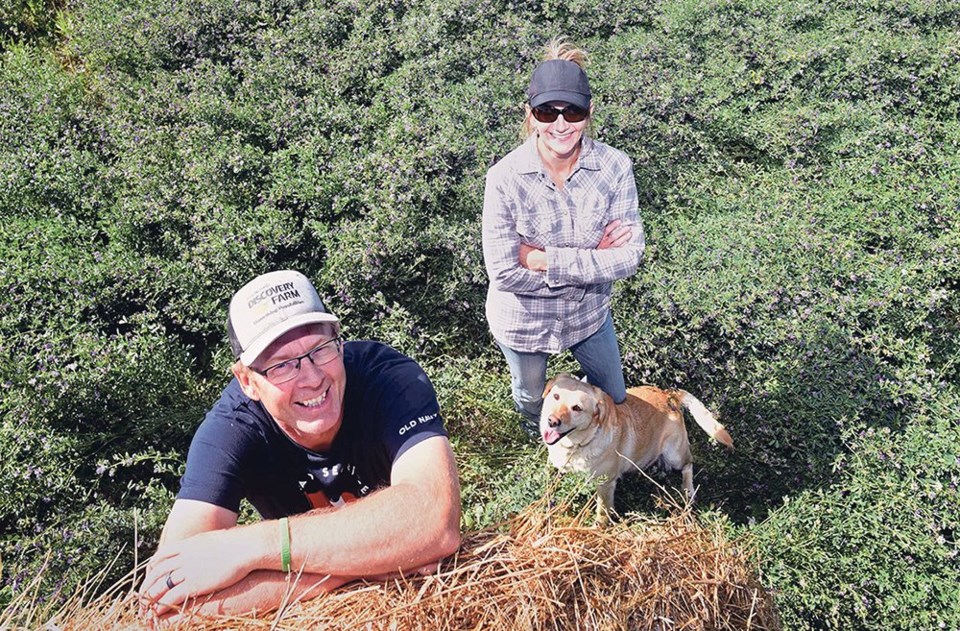QUILL LAKE, Sask. — On the Northern Great Plains, 80 per cent of nutrient loss comes from 20 per cent of the cropland. The federal government wants a 30 per cent reduction in greenhouse gas emissions from fertilizers.
Those are just some of the numbers Quill Lake, Sask., farmer Dwight Odelein pondered as he contemplated investing in variable rate (VR) seeding equipment. The other numbers were dollars.
Odelein had salinity patches that were sucking up the cash he drilled into the soil and he wanted that to stop.
Salinity was the obvious reason for VR, plus the prospect of mandatory fertilizer reduction of 30 per cent loomed large.
In a phone interview, Odelein conceded the commercial nutrient reduction may be necessary, but farmers cannot make a blanket reduction across the whole of the Prairies, or even across a whole field. Such a cut would cause a dramatic drop in prairie food production and individual farm profits, something nobody wants.
“Fertility reductions must come from specific low-productivity zones. You don’t starve your high-performance acres. This is where precision agriculture (PA) and variable rate enter the picture. This is how we know where to cut and by how much,” said Odelein, adding that there are different mechanisms for phosphate loss and nitrous oxide loss.
The same soil conditions affect both nutrient losses. Those are anaerobic conditions, the overapplication of fertilizer in zones where it cannot be used and fertilizer in zones with high runoff risk.
Research shows that soil chemistry changes if soil management turns a zone anaerobic. Oxygen in the soil pores is replaced by water. When these saturated conditions persist, the microbial, fungal and plant activities use up any remaining oxygen.
“That saturated condition pulls up the phosphates that have been locked in the ground and turns them soluble. Now they can run off the field.”
Nitrous oxide is more harmful to the climate than carbon dioxide and is increasing in the atmosphere, according to a study published in the journal Nature. The October 2020 posting states that nitrous oxide is 300 times more harmful to the climate than carbon dioxide.
Odelein says VR addresses these issues by putting fertilizer where it can be fully used, and lowering or eliminating fertilizer where it cannot be used. He knows of no other way to deal with the issue. However, farmers have been reluctant to embrace PA and VR for a number of reasons.
One of the first objections comes from producers with flat land. They say VR is appropriate on landscapes with a lot of topography but not on flat fields. To rebut that concern, Odelein says 15 of his 16 quarters are flat. The first year he only employed VR on three quarters. That was enough to convince him the whole farm should go under VR.
Another issue is poor understanding of the maps farmers get from the agronomists. Odelein said it’s up to the farmer to ground truth the maps. If a map shows a badly eroded knoll or a saline patch, go visit those spots to confirm whether or not your map can be trusted. Plus, the prescription map must be compatible with your equipment and it must be accurately entered.
“There’s another glitch that’s been a problem for guys with big seeders. You can be in two zones at the same time. I’ve seen this even with my 60-foot seeder. I look to my left and the screen tells me I’m in a saline spot. I look to my right and I’m on ground where the crop grows fine.”
He said it’s up to the farmer to decide which zone gets the correct rate. A bad decision gives a wrong rate that’s either too high or too low. Will you decide the productive zone gets the correct nutrients while the non-productive zone gets too much fertilizer again? Most systems, when they default, go to the mode calling for more fertilizer, exacerbating the problem.
“Manufacturers are finally addressing this problem using their existing section control technology. Some big seeders now have variable rate sections. I believe Seed Hawk, Vaderstad and Bourgault have that feature. I think Seed Hawk has eight sections which vary independently. But I still hear guys talking about four percent overlap, even with sectional control.”
Odelein is involved in a University of Saskatchewan research project on his farm. Wes Anderson of CropPro is building the maps using their SWAT system. The university, under the guidance of Helen Baulch, is using their research staff to evaluate the loss of nutrients from saline patches on the Odelein farm.
“I’m enthused about this research because I think there’s a lot we can all learn. I started to realize a while ago that variable rate could have a big impact on nutrient losses. Without variable rate, you over-apply nutrients in places you don’t need it, especially saline areas where there’s an over-abundance of those nutrients. So why give them more?
Odelein started the project last year, but said he is already drawing down phosphate levels, thus allowing less phosphate runoff. His phosphate rate is 70 or 80 percent of normal, with some of that in the form of Crystal Green, which is about 80 percent plant-available right off the bat and seed-safe. Crystal Green lowers P solubility to reduce losses in runoff.
“The federal government wants a 30 percent reduction. To fit that criteria, I’m concentrating on the 20 per cent of my acres where 80 percent of the losses are occurring.
“I’m always interested in what the university people have to say. I didn’t even know what soluble phosphate was until a couple years ago. I started doing some research and talked to people like Don Flaten. He’s one of those guys who’s willing to come out and get his boots muddy.”




